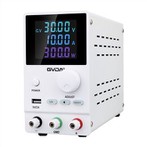What requirements must be fulfilled during testing of gas detectors?
1. Appearance and functional inspection
1. Check the appearance and other items
Detect the appearance of the gas detector, which is to avoid minor problems in the transportation or assembly process of the gas detector. We need to check whether the appearance of the gas detector is flawed, cracked or damaged, and check whether the structure of the entire gas detector is whole. At the same time, check the machine model, label, manufacturer name, and delivery time on the gas detector body and check them with the manual or the information given by the manufacturer to ensure accuracy. At the same time, check the explosion-proof mark and measurement license of the gas detector The content such as logo and number must be complete and clear, and some certificates can be provided by the manufacturer.
2. Power-on inspection
The gas detector needs power to work, and it is usually powered by a built-in battery. We need to turn on the switch to check whether the gas detector is powered on normally. Some gas detectors continue to work by replacing the battery, and some gas detectors The detector is equipped with a charger. For the gas detector equipped with a charger, we need to test whether the charger is charged normally. If the power is normal, we need to check whether the display screen of the gas detector is normal.
3. Check whether the sound and light alarm of the instrument is normal
For gas detectors with sound and light alarm signals, because they are powered by batteries, when the undervoltage is displayed, they should be able to send out sound or light indication signals that are clearly different from the alarm signal.
2. Indication error
The gas detector we bought is used to detect the gas concentration. The gas detector cannot be perfect for the display of the gas concentration. It has an error, but this error has a range. If it exceeds this range, it means This gas detector does not meet the standard, and the indication error specified by it is different for different gases. For example, it is normal for the indication error of oxygen to be within ±0.5%VOL.
3. Alarm error
We mentioned the error of the displayed value above, so there is a certain allowable error for the alarm value of the gas detector, because the instrument will be affected by various factors, it is impossible to alarm at an accurate concentration every time, Therefore, the concentration of the alarm is allowed to have errors, as long as the errors are within the standard range. Its alarm error is also different for different gases, for example: the alarm error of oxygen is within ±0, 1%VOL.
4. Response time
Response time refers to the time required for the indication value of the gas detector to rise from zero to 90% of the stable indication value that the instrument should reach. This time is also required by the standard. This standard is the same as the indication error and the alarm error. Different gases respond differently.
5. Insulation withstand voltage
For gas detectors, there are some insulation withstand voltage standards that must be met. The standard requirements: at room temperature: ≥100MΩ; after damp heat: ≥1MΩ. The dielectric strength should be able to withstand 500V AC voltage for lmin, and discharge and breakdown should not occur. Only after these are met can the gas detector meet the standard.






